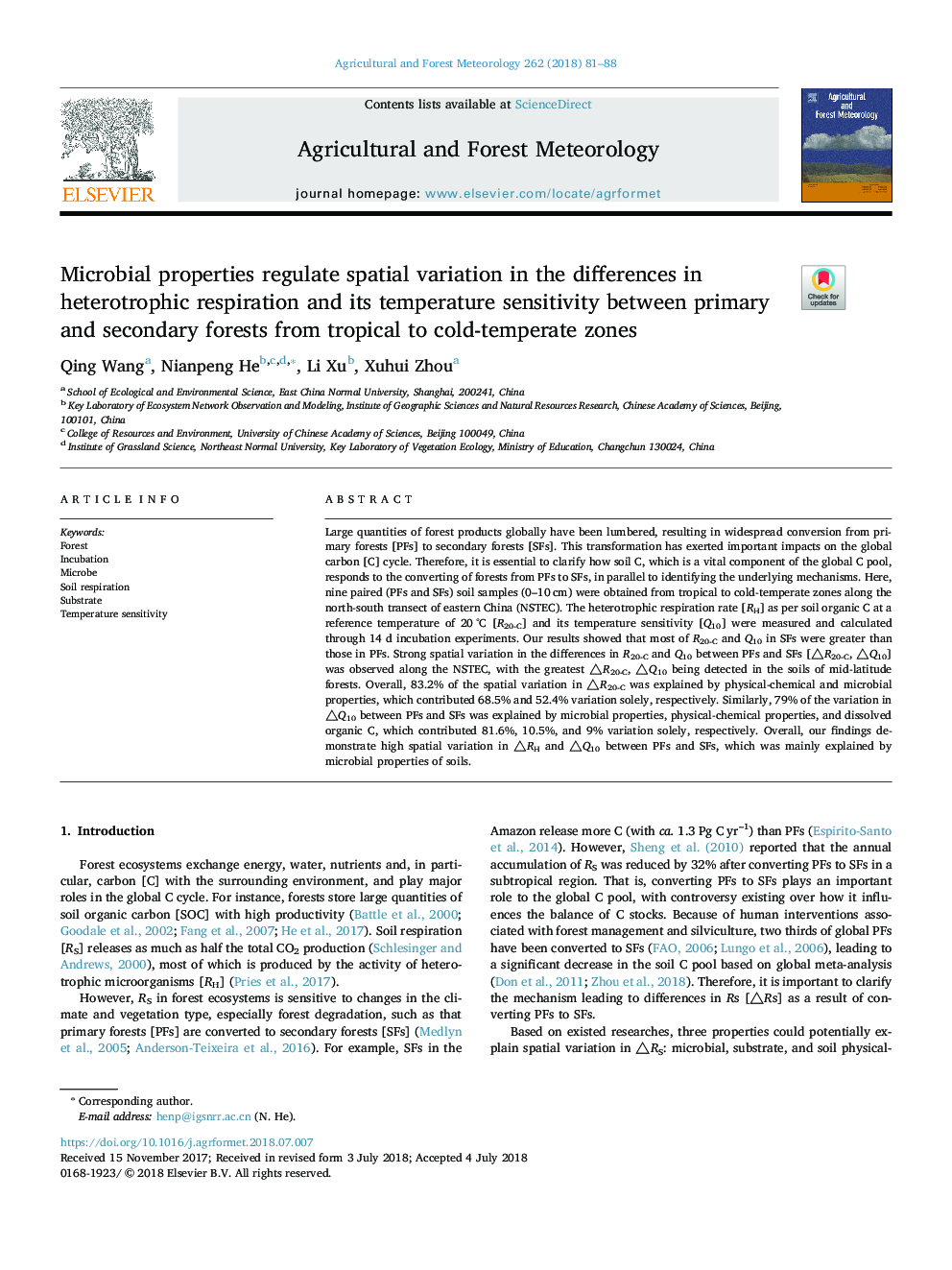| کد مقاله | کد نشریه | سال انتشار | مقاله انگلیسی | نسخه تمام متن |
|---|---|---|---|---|
| 6536567 | 1420843 | 2018 | 8 صفحه PDF | دانلود رایگان |
عنوان انگلیسی مقاله ISI
Microbial properties regulate spatial variation in the differences in heterotrophic respiration and its temperature sensitivity between primary and secondary forests from tropical to cold-temperate zones
ترجمه فارسی عنوان
خواص میکروبی تغییرات فضایی را در تفاوت های تنفس هتروتروف و حساسیت درجه حرارت آن بین جنگل های اولیه و ثانویه از مناطق گرمسیر به مناطق سرد
دانلود مقاله + سفارش ترجمه
دانلود مقاله ISI انگلیسی
رایگان برای ایرانیان
کلمات کلیدی
جنگل، انکوباسیون، میکروب تنفس خاک، لایه، حساسیت دما،
موضوعات مرتبط
مهندسی و علوم پایه
علوم زمین و سیارات
علم هواشناسی
چکیده انگلیسی
Large quantities of forest products globally have been lumbered, resulting in widespread conversion from primary forests [PFs] to secondary forests [SFs]. This transformation has exerted important impacts on the global carbon [C] cycle. Therefore, it is essential to clarify how soil C, which is a vital component of the global C pool, responds to the converting of forests from PFs to SFs, in parallel to identifying the underlying mechanisms. Here, nine paired (PFs and SFs) soil samples (0-10â¯cm) were obtained from tropical to cold-temperate zones along the north-south transect of eastern China (NSTEC). The heterotrophic respiration rate [RH] as per soil organic C at a reference temperature of 20â¯Â°C [R20-C] and its temperature sensitivity [Q10] were measured and calculated through 14 d incubation experiments. Our results showed that most of R20-C and Q10 in SFs were greater than those in PFs. Strong spatial variation in the differences in R20-C and Q10 between PFs and SFs [â³R20-C, â³Q10] was observed along the NSTEC, with the greatest â³R20-C, â³Q10 being detected in the soils of mid-latitude forests. Overall, 83.2% of the spatial variation in â³R20-C was explained by physical-chemical and microbial properties, which contributed 68.5% and 52.4% variation solely, respectively. Similarly, 79% of the variation in â³Q10 between PFs and SFs was explained by microbial properties, physical-chemical properties, and dissolved organic C, which contributed 81.6%, 10.5%, and 9% variation solely, respectively. Overall, our findings demonstrate high spatial variation in â³RH and â³Q10 between PFs and SFs, which was mainly explained by microbial properties of soils.
ناشر
Database: Elsevier - ScienceDirect (ساینس دایرکت)
Journal: Agricultural and Forest Meteorology - Volume 262, 15 November 2018, Pages 81-88
Journal: Agricultural and Forest Meteorology - Volume 262, 15 November 2018, Pages 81-88
نویسندگان
Qing Wang, Nianpeng He, Li Xu, Xuhui Zhou,
